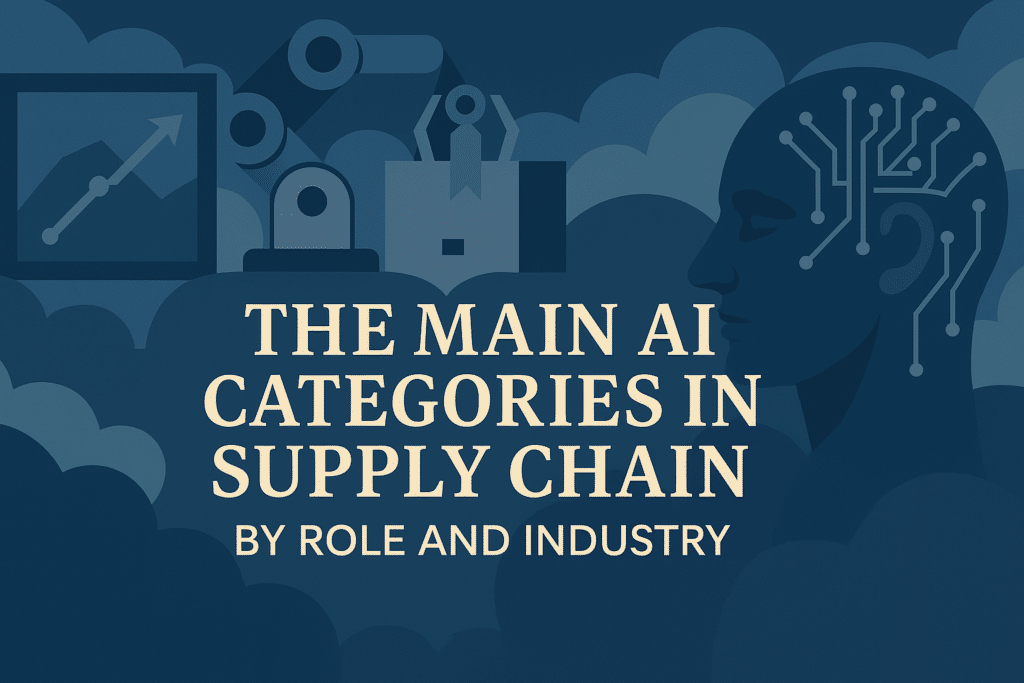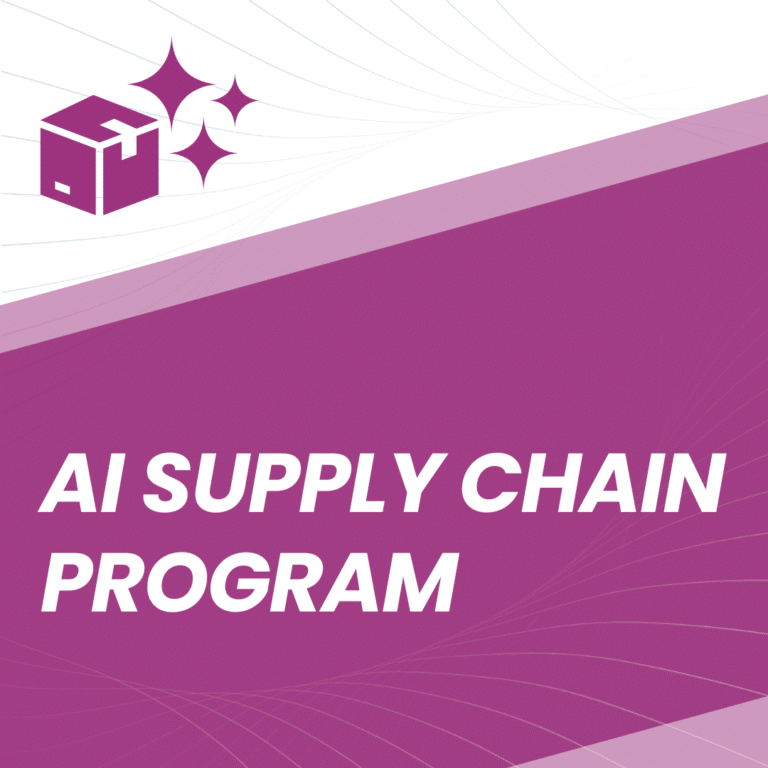
Artificial Intelligence in Supply Chain Is Not a Monolith
When executives hear the term Artificial Intelligence in Supply Chain, they often imagine a single, unified technology: something like a magic brain applied to business. Not long ago, Blockchain, Big Data, and Machine Learning held that role too and I watched managers chase these buzzwords simply because the term sounded like the future, not because the problem truly demanded that solution. In reality, AI is not one thing, but many. It is a family of approaches, each with different strengths, limitations, and implications. To treat AI as a monolith is to miss the nuance that separates meaningful transformation from wasted budgets.
In supply chain strategy, these nuances matter. Predictive AI does not work like generative AI. Analytic AI plays a different role again. And each of these categories finds its utility not in abstraction, but in the concrete tasks of planners, buyers, manufacturers, and logisticians. To see clearly, leaders must map categories of AI not just to algorithms, but to functions and industries.
Predictive Artificial Intelligence: Seeing Around the Corner
At its heart, predictive AI is about anticipation. It ingests historical data, external signals, and dynamic variables to forecast what might happen next. For supply chains, this capability is essential.
- Demand planners use predictive AI to sense shifts in consumer behavior. A neural network trained on POS data, weather, promotions, and social trends might signal that umbrellas will spike in Paris next week.
- Inventory managers anticipate stock-outs before they occur. Algorithms can flag patterns invisible to the human eye, reallocating safety stock across warehouses in near real time.
- Maintenance teams in asset-heavy industries detect anomalies before breakdowns occur, turning downtime from a surprise into a scheduled event.
The value of predictive AI is its pragmatism. It does not invent. It refines the art of foresight. Its weakness is clear: it is bounded by the past and struggles to anticipate shocks with no precedent.
Generative Artificial Intelligence: Rewriting the Playbook
Generative AI is different. Instead of predicting what will happen, it creates new possibilities: text, images, simulations, synthetic data. In supply chain functions, its applications are more experimental, but no less profound.
- Procurement officers draft RFPs or contracts, accelerating negotiations without losing precision.
- Training and onboarding teams build adaptive learning modules tailored to each role.
- Scenario planning becomes richer when generative AI creates synthetic market shocks: what if fuel costs doubled overnight, or a supplier in Vietnam vanished from the network.
Generative AI’s strength is creativity. It expands the solution space. It also carries a paradox: it can hallucinate. In contexts where precision is paramount, leaders must balance exploration with discipline.
Analytic Artificial Intelligence: Making Complexity Legible
If predictive AI forecasts and generative AI imagines, analytic AI explains. It is the class of tools that structure complexity into patterns that humans can act on.
- Executives use analytic AI in control towers: dashboards that integrate dozens of systems and surface the few metrics that matter most for strategic oversight.
- Finance and risk managers simulate the ripple effects of exchange rates, tariffs, or geopolitical events.
- Operations teams apply constraint-based optimization: which factory should produce which SKU, under which cost structure, for which delivery window.
Analytic AI’s role is interpretive. It does not dazzle with novelty; it disciplines chaos. Its risk is overconfidence. A clean dashboard may hide fragile assumptions, and executives lulled into false clarity may miss lurking uncertainty.
Industries and Functions: The Map Matters
- Retail thrives on predictive demand sensing and analytic replenishment models.
- Pharma and healthcare push boundaries in generative simulation: modeling drug supply disruptions or synthetic patient pathways.
- Manufacturing blends predictive maintenance with analytic optimization of production schedules.
- Logistics integrates predictive ETA models with generative customer communication tools.
Across all of them, the roles shift: planners forecast, buyers negotiate, executives interpret. AI is not a monolith because business itself is not a monolith. Each function demands a different tool, and each industry reveals different leverage points.
Artificial Intelligence : A Strategy, Not a Shortcut
The conversation about AI in supply chains should not revolve around whether an organization is using AI or not. That question is already obsolete. The real question is: which categories of AI are you deploying, in which functions, and to what end.
Predictive, generative, analytic: each category contributes a different layer of value. The leaders who succeed will not chase the latest model as a panacea. They will curate a portfolio of AI capabilities aligned with strategy, grounded in governance, and measured by outcomes.
AI is not a monolith. Neither are supply chains. The power lies in the match between the two.
Key takeaways about the main categories in AI for Supply Chain
What are the main categories of AI for supply chains?
Three practical families: Predictive AI for forecasting and anomaly detection, Generative AI for content and scenario creation, and Analytic AI for sense-making, optimization, and decision support.
How do I choose between predictive, generative, and analytic AI?
Start from the business objective. If you need foresight, use predictive. If you need new content or scenarios, use generative. If you need clarity and optimization, use analytic. Many programs combine all three.
What data foundations do I need to start an AI project?
Predictive AI needs clean history plus external signals. Generative AI benefits from curated corpora and guardrails. Analytic AI needs integrated, modeled data with clear definitions and lineage.
What are the biggest risks to manage in AI project?
For predictive: concept drift and bias.
For generative: hallucinations and IP leakage.
For analytic: hidden assumptions and dashboard overconfidence.
Mitigate with testing, monitoring, and clear governance.
Who should own AI decisions: IT or the business?
Business leaders own the decisions and outcomes. IT and data teams provide platforms and controls. Establish a joint governance model that assigns decision rights and escalation paths.


